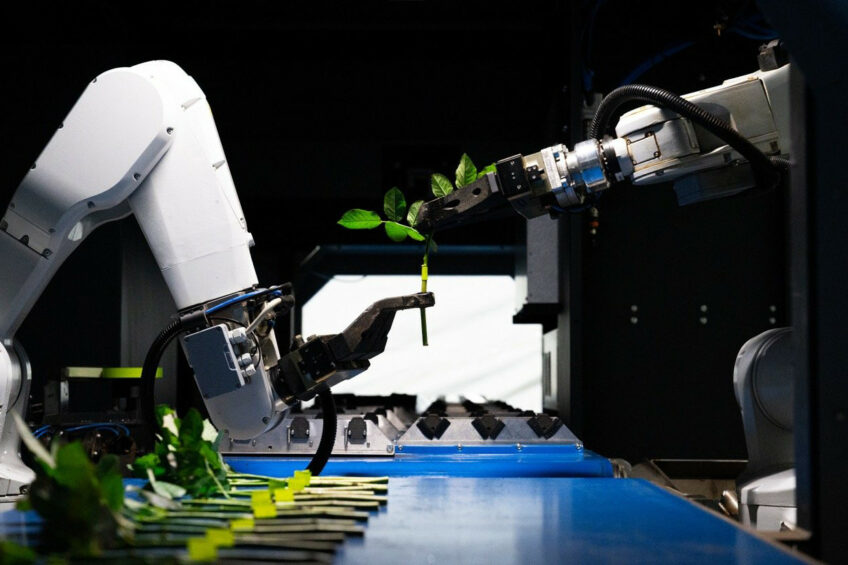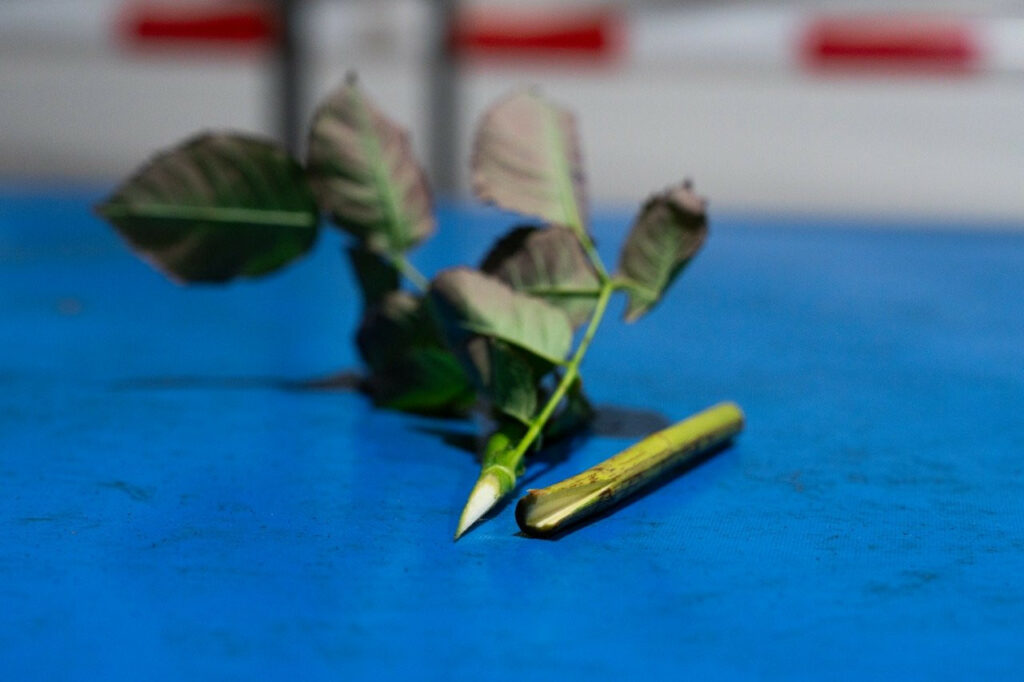Robot grafts trees without errors

Dutch company Horti Grafting is introducing a grafting robot for tree nursery crops. Horti Grafting is a spin-off of the Dutch tree nursery ‘t Kempke, run by Jan and Wim van Meerten. The grafting robot they developed for their own business is now ready to be used by others as well.
For grafting trees, the fully automated grafting robot uses the so-called triangular grafting method. The advantage of this is that there is more overlap between the graft and the rootstock. In fruit trees, manual grafting currently mainly uses the English cleft or veneer grafting method. Manual triangular grafting is considered more difficult and labor-intensive.
Better fusion results in less loss
In addition to saving labor, the robot ensures better fusion and less loss due to the higher success rate. In an initial test, the failure rate due to unsuccessful grafts dropped from 30% with manual grafting to 0.2% with the robot. More experiments and practical experience will determine how this holds up in practice.
The grafting machine provides the connection between the graft and the rootstock with tape. To prevent drying out, the grafting site and the top of the graft are normally coated with warm grafting wax. Since this is more difficult to automate and creates a lot of mess, Horti Grafting opts for a new cold grafting wax, which is liquid at room temperature and can be applied as a spray.
Text continues below picture

Contribution EU
The companies have received a contribution from the European Regional Development Fund in East Netherlands (EFRO Oost). The amount totals over €900,000 from the European Union, the province of Gelderland, and the Dutch government. The total cost of the project amounts to over €1.8 million.
Grafting plant and tree species is very labor-intensive and requires a lot of knowledge and expertise. The number of skilled workers for this task is declining, and the survival rate of grafted plants is low.
Not for sale, but available for hire
The robot is not available as a purchasable machine on the market. Instead, Horti Grafting visits with the machine and performs the grafting, for a price per graft between 60 cents and 1 euro. This season, the first grafting operations have been carried out on a larger scale, and the company is ready to scale this up.